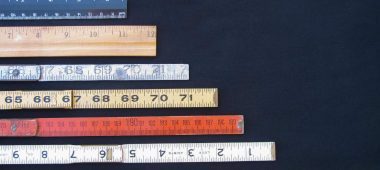This article was originally posted on Forbes.
A Harvard economics survey estimates that 100,000 U.S. small and medium-sized businesses have already permanently shut, with 30-50% expected to fail by year-end, depending on the duration of Covid-19.
The reality for many middle-market business owners is everything is on the line; more often than not personal assets back the business.
Confronting reality and being proactive are essential to getting back to a healthy financial state. Businesses need a turnaround plan and will strategically fight their way through phases that look more or less like this:
- Survival – You are urgently scrambling for cash to simply meet your upcoming payroll. Given meaningful operational changes require the luxury of time and money, most actions are focused simply on quickly accumulating enough cash to buy some breathing room (perhaps 60 days of time). Using a cash forecast to measure progress, basic actions are taken such as aggressively collecting outstanding receivables, delaying payables, selling off equipment or obsolete inventory, slashing expenses, and even skipping lease and loan payments. Nearly all of these actions are one-time shots of adrenaline that cannot continue along indefinitely. This stage rarely improves the sustainability of the ongoing business much. Some businesses reading this have already moved through the survival phase or are close – good for you. But the hope is that you are now also strategizing about ways to generate positive cash flow from operations in our current reality.
- Stabilization – At the core of every successful turnaround is a viable business. With the benefit of a little time, you can make informed structural changes through a plan. While successfully increasing sales would be ideal, in this current downturn you likely will need to shrink the business in order to balance the budget and become sustainable. This requires you to deeply understand which products, customers, and locations have a negative contribution margin— In other words, if this item were eliminated will there be more or less cash flow remaining to cover the fixed expenses? Changes and improvements must quickly occur for unprofitable operations or they should be eliminated. Finally, the business strategy must address what the new world will need. And that leads us to the last phase…
- Stabilization – At the core of every successful turnaround is a viable business. With the benefit of a little time, you can make informed structural changes through a plan. While successfully increasing sales would be ideal, in this current downturn you likely will need to shrink the business in order to balance the budget and become sustainable. This requires you to deeply understand which products, customers, and locations have a negative contribution margin— In other words, if this item were eliminated will there be more or less cash flow remaining to cover the fixed expenses? Changes and improvements must quickly occur for unprofitable operations or they should be eliminated. Finally, the business strategy must address what the new world will need. And that leads us to the last phase…
Your plan will need buy-in. If you are going to be asking your creditors, vendors, employees, and/or customers for concessions in order to survive, you need to be able to show them you have a well-thought out plan, which reflects how prepared and in control of your business you are. You should share your plan with them with the goal of quantitatively convincing them that they are better off partnering with you to save the business relative to the alternative: liquidation.
Your turnaround plan is also a fluid, living document. Like Eric Ries talks about in The Lean Startup, rapid iteration is replacing traditional strategy because there is so much uncertainty today and the best approach is to quickly try things with small, low-risk bets and modify as necessary. You want to be proactive with a strategic plan but you need to bias it toward action and experimentation vs in-depth research. And time isn’t on our side.















